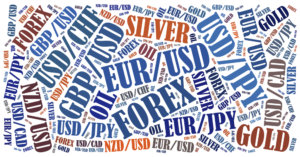On Tuesday, oil prices plunged after soft economic data fueled speculations that the Federal Reserve may raise interest rates in June.
The US West Texas Intermediate (WTI) crude futures for June delivery decreased by 0.85% to $81.93 per barrel on April 30. Furthermore, market analysts anticipate a further decline of 1.01% to $81.10 a barrel in the coming trading day.
Similarly, Brent oil June futures experienced a consecutive decrease, falling by 2.34% to $86.33 a barrel, following a 1.23% decrease the day before. This trend is expected to continue, with industry watchers estimating a 0.82% slide to $85.62 per barrel in the following session.
Meanwhile, the American Petroleum Institute reported a surprise build of 4.91 million oil barrels in the week ending April 26. Traders expected a draw of 1.50 million barrels to follow the 3.23-million-barrel shortfall in the preceding week.
In addition, the US Department of Energy posted that the Strategic Petroleum Reserve crude stock added 0.60 million barrels. With an inventory of 366.30 million barrels, America’s oil reserves have reached the highest point in a year.
The surprise accumulation overshadowed the positive pressure from the Israeli Prime Minister Benjamin Netanyahu’s refusal to halt attacks on Rafah. Netanyahu reiterated that not even a successful hostage deal will stop the IDF offensive on the southern Gaza city.
Federal Reserve Rate Hike to Dampen Oil Demand
Growing sentiment that the Federal Reserve may hike interest rates to stimulate the economy weighed on oil prices. Higher borrowing costs prompt businesses and consumers to cut spending, including fuel expenses.
The Chicago Manufacturing PMI, one of the leading regional indicators, plunged to 37.90 points in April. It decelerated sharply from 41.40 points a month earlier and defied expectations of an improvement to 44.90 points.
Hence, analysts cautioned that the Federal Reserve may increase the benchmark policy rate to slow the contraction in the factory sector. According to oil specialists, higher borrowing costs force businesses and consumers to reduce spending, including fuel expenses.











